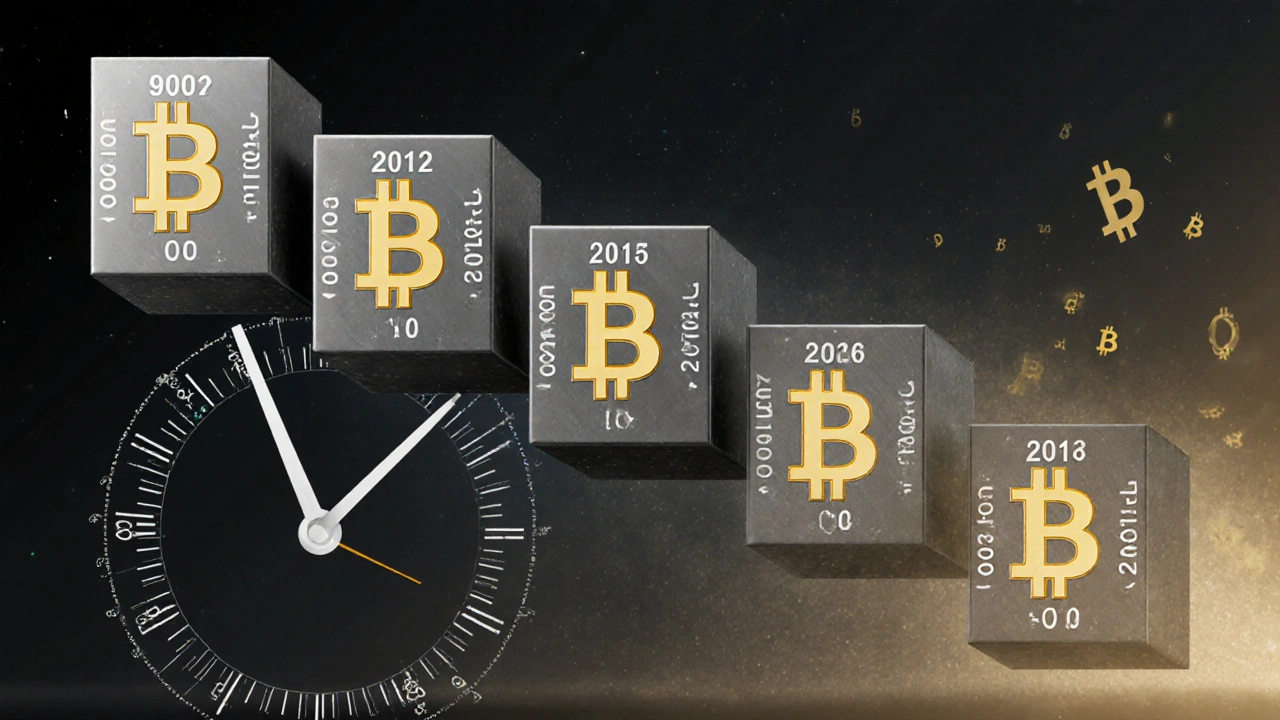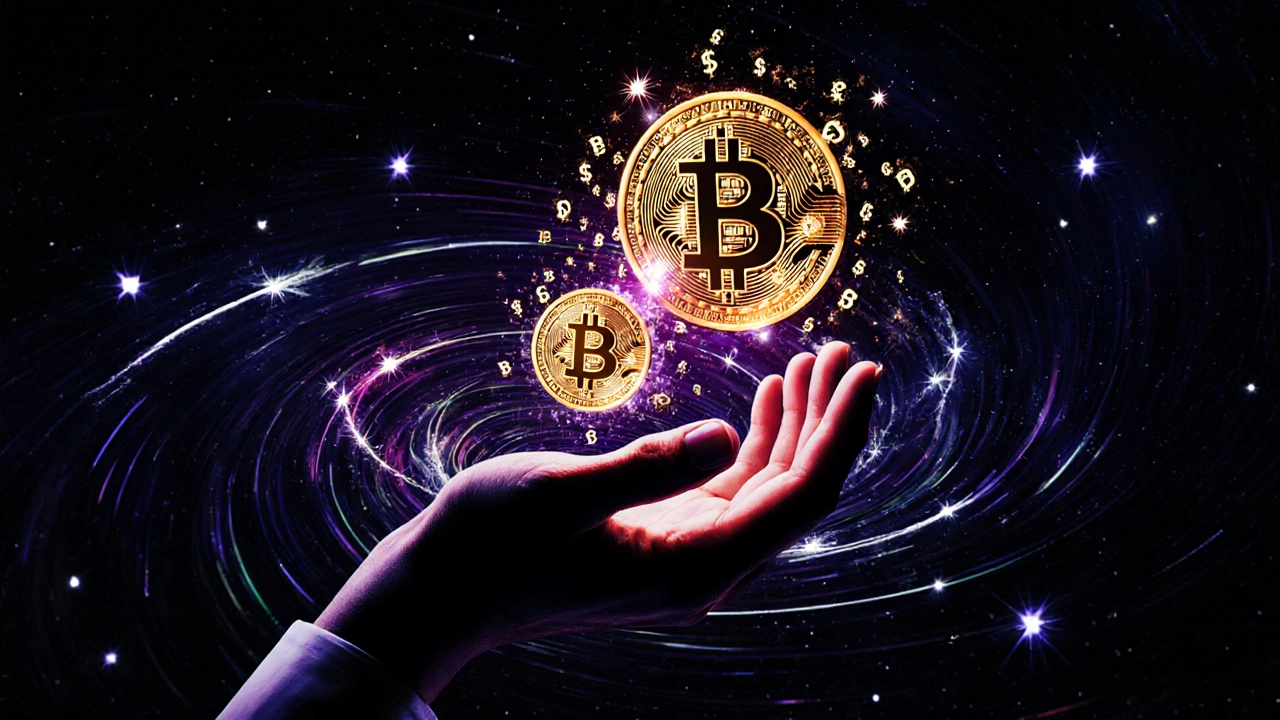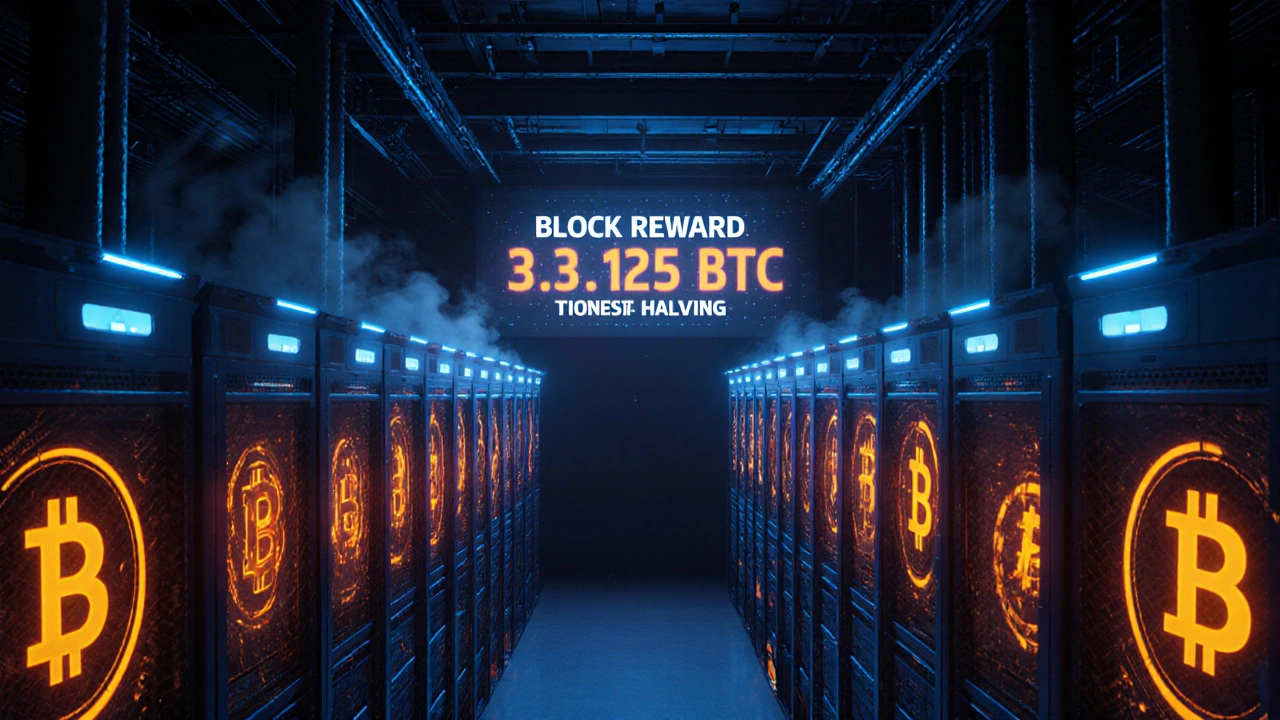Every ten minutes, a new block is added to the Bitcoin blockchain. And every time that happens, someone gets paid. Not with cash. Not with stocks. But with brand-new Bitcoin. That payment? It’s called the block reward.
What Exactly Is the Block Reward?
The block reward is the number of Bitcoin that miners receive for successfully validating a block of transactions and adding it to the blockchain. It’s the main incentive that keeps people running powerful computers 24/7 to secure the network. Without this reward, there’d be little reason for miners to invest in expensive hardware and electricity - and Bitcoin wouldn’t work.
When Bitcoin launched in 2009, the block reward was 50 BTC. That meant every time a miner solved the math puzzle and added a new block, they got 50 newly created Bitcoin. It wasn’t just a bonus - it was the only way new Bitcoin entered circulation. Today, that number is much lower.
How the Block Reward Changes Over Time
Bitcoin’s creator, Satoshi Nakamoto, built in a built-in slowdown. Every 210,000 blocks - roughly every four years - the block reward gets cut in half. This is called the halving.
Here’s how it’s played out so far:
- 2009-2012: 50 BTC per block
- 2012-2016: 25 BTC per block
- 2016-2020: 12.5 BTC per block
- 2020-2024: 6.25 BTC per block
- April 2024: dropped to 3.125 BTC per block
As of November 2025, the block reward is 3.125 BTC. That’s less than 7% of what it was at the start. The next halving is expected around 2028, when it will drop to 1.5625 BTC per block.
This design isn’t arbitrary. It ensures Bitcoin stays scarce. Only 21 million Bitcoin will ever exist. The block reward is how that limit is enforced over time. By 2140, the reward will be so small it’s effectively zero - and no new Bitcoin will be created.
Why Does the Block Reward Matter?
For miners, the block reward is the biggest part of their income - but not the only part. They also earn transaction fees from people sending Bitcoin. Right now, the block reward makes up about 90% of miner revenue. But as the reward shrinks, fees will become more important.
That’s a big shift. In 2024, the average transaction fee was around $1.50. By 2030, some experts predict fees could rise to $5-$10 per transaction if demand grows and block space stays limited. Miners will need to rely on those fees to stay profitable after the reward drops to near zero.
For users, the halving affects Bitcoin’s price. Historically, each halving has been followed by a price surge - sometimes within months, sometimes over a year. Why? Because the supply of new Bitcoin drops, but demand doesn’t always follow the same pattern. Less supply + steady or rising demand = higher prices.
After the 2020 halving, Bitcoin went from $9,000 to over $60,000 in 14 months. After the 2024 halving, it hit nearly $75,000 by mid-2025. That doesn’t mean it’ll happen again - but it shows how deeply the block reward is tied to market behavior.

How Mining Works With the Block Reward
Miners don’t just pick a block and collect the reward. They compete. Thousands of machines around the world are trying to solve a complex cryptographic puzzle. The first one to solve it gets to add the next block - and claim the reward.
The puzzle isn’t about math skills. It’s about brute force. The more computing power you have, the more guesses you can make per second. That’s why mining has shifted from home computers to giant data centers filled with ASIC chips - machines built only for Bitcoin mining.
When a miner wins, they bundle up all the new transactions from the past ten minutes, verify they’re valid, and add them to the blockchain. Then they broadcast the block to the network. Other nodes check the work. If it’s correct, the block is accepted. The miner gets the reward - 3.125 BTC - plus all the transaction fees from that block.
It’s a race. And the prize is Bitcoin.
What Happens When the Block Reward Disappears?
By 2140, the block reward will be effectively zero. That doesn’t mean Bitcoin stops working. It just means miners will rely entirely on transaction fees to make money.
That’s the long-term test for Bitcoin. Can the network stay secure without new coins being created? The answer depends on two things:
- Will people keep using Bitcoin enough to generate high transaction fees?
- Will miners still have the incentive to invest in expensive hardware?
Right now, Bitcoin handles about 400,000 transactions per day. That’s low compared to Visa, which processes over 170 million per day. But Bitcoin isn’t meant to be a payment processor like Visa. It’s digital gold - a store of value. Most Bitcoin transactions are large transfers between exchanges, institutions, or wallets. Those often pay higher fees.
As Bitcoin grows in value, even small fees in BTC terms become valuable in dollars. A 0.001 BTC fee today is worth over $60. In 2030, it could be worth $200. That’s enough to keep miners running.
There’s also the possibility of off-chain solutions like the Lightning Network. These let users make thousands of tiny payments without burdening the main blockchain. Only the final settlement hits the blockchain - with a single, low fee. That keeps costs down for users and still gives miners a steady income stream.

Block Reward vs. Transaction Fees: The Trade-Off
Some people worry that as block rewards shrink, Bitcoin will become too expensive to use. But that’s not the whole story.
Transaction fees aren’t random. They’re set by users. If you want your transaction processed fast, you pay more. If you’re not in a hurry, you can pay less - or even nothing, if the network isn’t busy.
Miners always pick the transactions with the highest fees first. That creates a market. Users bid for space. It’s not perfect, but it’s simple and transparent.
Compare that to traditional banking. Banks charge fixed fees, often hidden in fine print. Bitcoin’s fee system is public. You see the fee before you send. You choose how much to pay. There’s no middleman deciding your cost.
What Does This Mean for You?
If you’re holding Bitcoin, the block reward matters because it affects scarcity and price. Fewer new coins = more pressure on price if demand stays strong.
If you’re mining, you need to plan for the future. Hardware costs money. Electricity costs money. As the reward drops, your profit margin tightens. You’ll need to be efficient - use cheap power, modern ASICs, and keep maintenance low.
If you’re sending Bitcoin, understand that fees will rise over time - but so will Bitcoin’s value. A $10 fee in 2030 might feel like nothing if your Bitcoin is worth $500,000.
And if you’re just curious? The block reward is one of the most brilliant parts of Bitcoin’s design. It’s not just a payment system. It’s a clock. A countdown. A way to control inflation without a central bank. Every four years, the supply slows down. And every time it does, the world watches to see what happens next.
Is the block reward the same as mining rewards?
Yes. The block reward is the main mining reward. Miners earn Bitcoin for adding blocks to the blockchain. That’s the block reward. They also earn transaction fees, but the block reward is the larger, predictable part of their income.
How many Bitcoin are left to be mined?
As of November 2025, about 19.7 million Bitcoin have been mined. That leaves roughly 1.3 million Bitcoin left to be released through block rewards. After that, no new Bitcoin will be created - only transaction fees will reward miners.
Why does Bitcoin have a block reward at all?
The block reward serves two purposes: it’s the only way new Bitcoin enters circulation, and it incentivizes miners to secure the network. Without it, no one would spend money on hardware and electricity to verify transactions - and the network would collapse.
Can the block reward be changed?
Technically, yes - but only if over 50% of miners agree to change the rules. That’s called a hard fork. But Bitcoin’s community has always stuck to the original code. Changing the block reward would break the promise of scarcity. It’s extremely unlikely to happen.
What happens if miners stop mining after the reward drops?
If miners leave the network, transaction confirmation slows down, and security weakens. But Bitcoin’s difficulty adjusts every two weeks to keep blocks coming every ten minutes. If fewer miners are active, the puzzle gets easier. That makes it cheaper to mine, which attracts miners back. The system self-corrects.


9 Responses
block reward? more like a central bank scam wrapped in crypto garb. they say 'no central authority' but the halving is literally programmed inflation control. who coded that? some guy in 2008 with a vape pen and a dream. we're all just rats on a wheel waiting for the next cut.
You people still think this is 'digital gold'? Pathetic. The block reward isn't a reward-it's a subsidy for degens with ASICs the size of refrigerators. Real money doesn't need to be mined. Real money is backed by power, not hashpower. You're all just gambling with electricity and hope.
Let’s cut through the noise. The block reward isn’t about magic numbers-it’s about incentives. Miners secure the network because they get paid. Without that, you’ve got a glorified spreadsheet. And yes, fees will rise, but that’s not a bug-it’s a feature. Bitcoin’s value isn’t in being cheap to use, it’s in being unbreakable. The system works because it’s designed to adapt, not to please everyone.
I’ve been holding since 2017 and I still get chills reading this. The elegance of the halving is something you can’t fake. It’s like a heartbeat-steady, predictable, inevitable. And the fact that it’s math, not politics, that controls supply? That’s why I sleep easy at night. No Fed, no bailouts, no hidden agendas. Just code and consensus.
In India, most people still don’t understand Bitcoin. But when I explain block reward like this-'it's like printing money but with a timer that slows down every 4 years'-they get it. The real genius is how it aligns incentives. Miners aren't paid to be nice. They're paid to be honest. And that’s rare.
The block reward is a theological construct disguised as economics. You believe in scarcity because you were told to. But what if scarcity itself is the illusion? The real revolution isn’t in halvings-it’s in the fact that we’re all collectively hallucinating value into a ledger. The reward is just the incense burned to keep the temple alive.
I remember when I first mined a block on my old laptop back in 2011-got 50 BTC, didn’t even know what to do with it. Now I watch the charts and think about how much has changed. The hardware, the energy, the people… it’s wild. But what really sticks with me is how the reward keeps getting smaller and yet the network keeps growing stronger. It’s like watching a tree grow slower but deeper. You don’t notice it day to day, but over time? It’s the only thing holding the whole sky up.
I cried when I saw the 2024 halving chart. Not because I made money-I didn’t. But because I realized how beautiful this system is. It doesn’t beg for attention. It doesn’t shout. It just… ticks. Like a clock in a cathedral. And every four years, it whispers: 'You still believe?' And somehow, we all do. Even the skeptics. Especially the skeptics.
Block reward? Nah, it’s the Bitcoin birthday cake. Every four years, someone snatches half the candles and says 'enjoy the crumbs.' And we cheer like it’s a feature, not a bug. Meanwhile, the fee market’s quietly becoming the new king. Smart money’s already moving to Lightning. The rest of you? Still waiting for the next halving to make you rich. Cute.